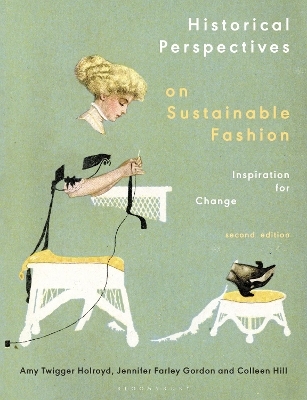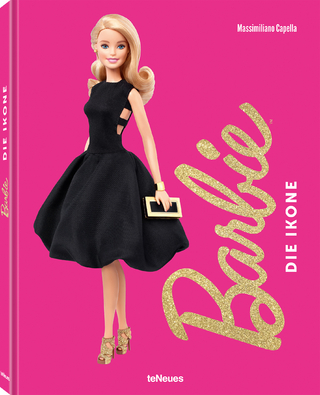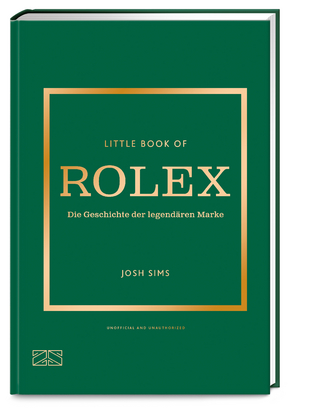
Historical Perspectives on Sustainable Fashion
Bloomsbury Visual Arts (Verlag)
978-1-350-16043-9 (ISBN)
The 1st edition, Sustainable Fashion: Past, Present and Future, emerged from the Museum at FIT’s groundbreaking exhibition ‘Eco-Fashion: Going Green’. This revised edition broadens perspectives even further, incorporating eye-opening examples of designers, brands and activists working for change across the world today. Likewise, a new chapter examines the globalized mainstream fashion system and historical alternatives that provide compelling inspiration for reimagining the status quo.
Fascinating and timely, Historical Perspectives on Sustainable Fashion examines progressive fashion through a historical lens, encouraging readers to question the state of the industry and demonstrating the value of historical insights in enabling and inspiring change.
Amy Twigger Holroyd is Associate Professor of Fashion and Sustainability in the School of Art & Design at Nottingham Trent University, UK. Jennifer Farley Gordon is an affiliate faculty member in the Apparel, Events & Hospitality Management department at Iowa State University, USA. She is also an independent researcher, writer, and curator, and formerly worked as an assistant curator at The Museum at the Fashion Institute of Technology (MFIT) in New York, USA. Colleen Hill is Curator of Costume and Accessories at the Museum at FIT in New York, USA.
Introduction
1. Materials and processes
Materials and processes: how did we get here?
The development of cotton
Wool and its competitors
Silk and rayon
Synthetic fibers
Unconventional materials
The invention of synthetic dyes
Human impacts of dyeing
Environmental impacts of dyeing
Materials and processes: inspiration for change
Organic cotton
The resurgence of wool
Hemp and flax
Lyocell and bamboo
Lower impact dyes
Natural dyes
Materials and processes: thinking critically
Materials and processes: further reading
2. Design and Manufacture
Design and manufacture: how did we get here?
Clothing production before mechanization
Advancements in spinning and weaving
The sewing machine and ready-made clothing
Choice and disposability
Design and manufacture: inspiration for change
Wartime restrictions and quality
Post-war couture
Artisanal techniques and slow fashion5
Design features
Design and manufacture: thinking critically
Design and manufacture: further reading
3. Reuse and Recycling
Reuse and recycling: how did we get here?
Repurposing practices
Shawls and scraps
The Great Depression and the Second World War
Shoddy recycling
Reuse and recycling: inspiration for change
Post-war repurposing
The rise of vintage
Repurposing and upcycling in the 1990s and 2000
A new era of fiber recycling
Reuse and recycling: thinking critically
Reuse and recycling: further reading
4. Labor Practices
Labor practices: how did we get here?
Textile mills
Child labor
Garment factories
Globalization and sweatshops
Subcontracting and safety
Labor practices: inspiration for change
Unionization
Labeling
Designer-led action
Labor rights in a globalized industry
Cooperatives and fair trade
Labor practices: thinking critically
Labor practices: further reading
5. Treatment of Animals
Treatment of animals: how did we get here?
Feather adornments
The use of fur
Trapping and farming
Treatment of animals: inspiration for change
Anti-feather campaigns
Anti-fur campaigns
Fake and “ethical” fur
Treatment of animals: thinking critically
Treatment of animals: further reading
6. Fashion systems
Fashion systems: how did we get here?
Enclosure, capitalism and modernity
The European fashion system and the Industrial Revolution
Consumerism and change
Fashion systems: inspiration for change
How clothes are used
New approaches to dressing the body
Challenging social norms
Domestic and custom making
Local production and local distinctiveness
Restricting and managing production
Fashion systems: thinking critically
Fashion systems: further reading
Conclusion
Notes
Select bibliography
Glossary
Index
| Erscheinungsdatum | 01.02.2023 |
|---|---|
| Zusatzinfo | 100 bw illus |
| Verlagsort | London |
| Sprache | englisch |
| Maße | 189 x 246 mm |
| Themenwelt | Kunst / Musik / Theater ► Design / Innenarchitektur / Mode |
| Kunst / Musik / Theater ► Kunstgeschichte / Kunststile | |
| Sozialwissenschaften | |
| ISBN-10 | 1-350-16043-1 / 1350160431 |
| ISBN-13 | 978-1-350-16043-9 / 9781350160439 |
| Zustand | Neuware |
| Haben Sie eine Frage zum Produkt? |
aus dem Bereich


